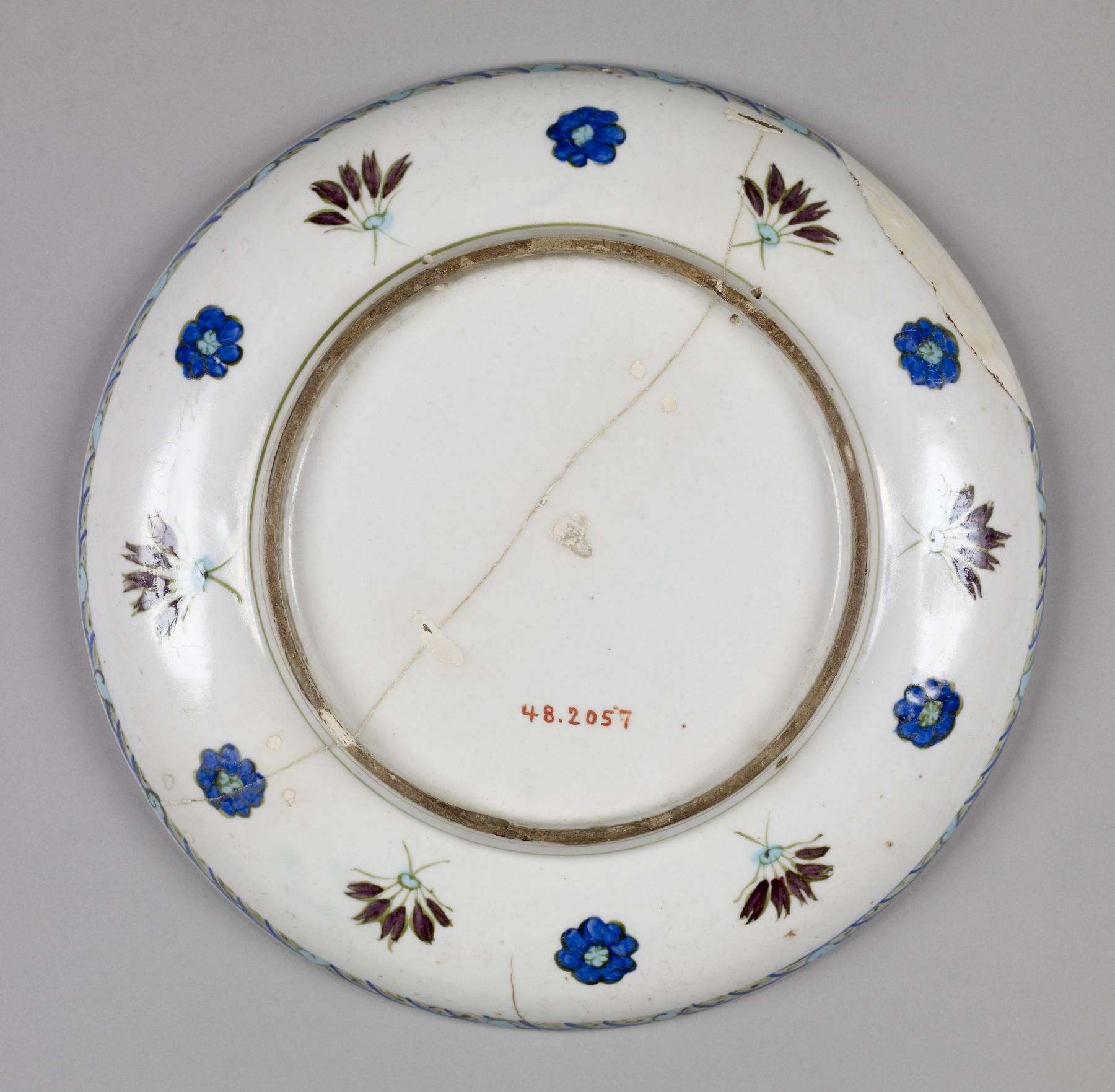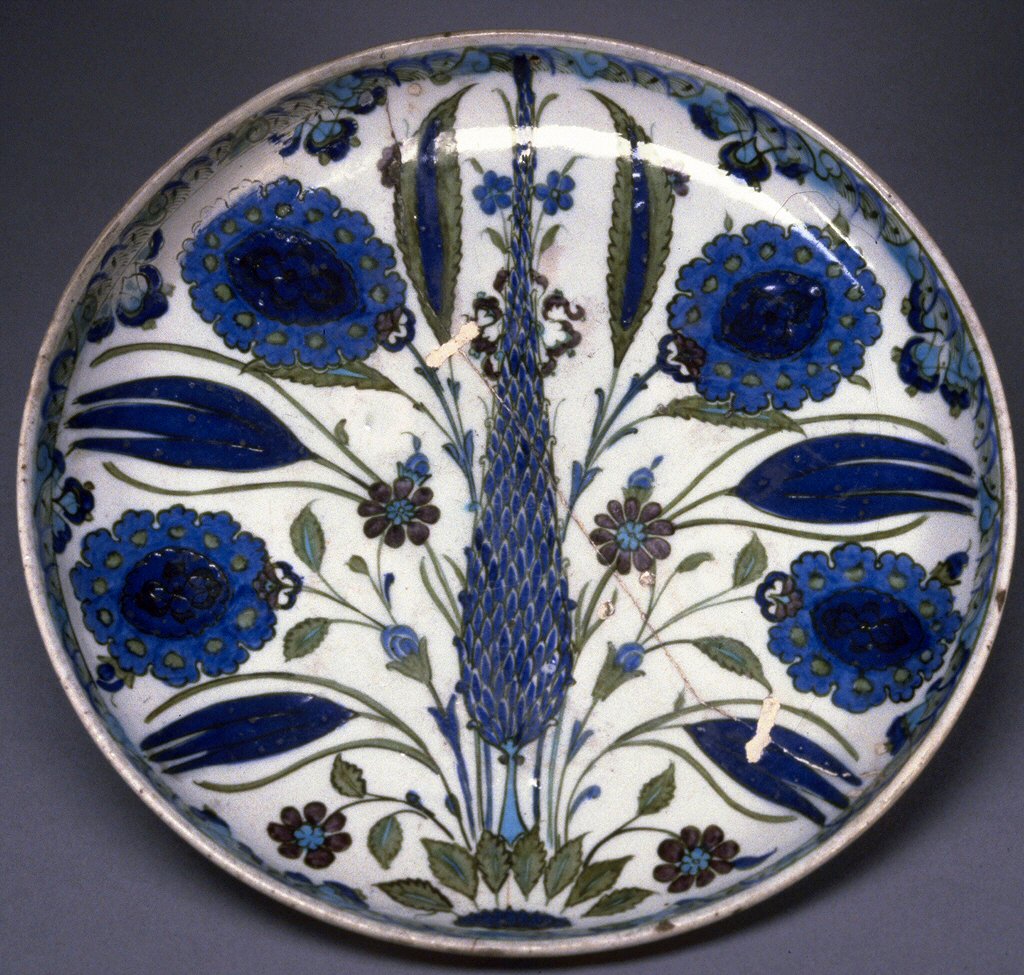Plate with Tulips
(Islamic World )
Perhaps best known among the ceramics produced in the Ottoman Empire are those made in İznik, a town southeast of Istanbul (in present-day Turkey). The artists working in İznik produced dishware for eating and serving, vessels like jugs and tankards, as well as tiles that adorned the walls of buildings. In addition to the hard, white clay body and the crystal-clear glaze, a characteristic feature of İznik ceramics is the color palette of a bright orange-red among shades of blue and green in the underglaze decoration. Certain flowers—mainly tulips, carnations, roses, and hyacinths—appear across various media in Ottoman art, as exemplified the dark blue tulips with elongated petals on this plate.
Provenance
Provenance (from the French provenir, 'to come from/forth') is the chronology of the ownership, custody, or location of a historical object. Learn more about provenance at the Walters.
Edouard Aynard Sale, Paris, Dec. 1913, no. 113; Estate of D.K. Kelekian; Walters Art Museum, 1952, by purchase.
Exhibitions
| 2019-2021 | Excursions through the Collection: Portraiture, Adornment, and the Natural World. |
| 2012 | Paradise Imagined: Images of the Garden in the Islamic and Christian World. The Walters Art Museum, Baltimore. |
| 1971-1972 | World of Wonder. The Walters Art Gallery, Baltimore. |
Conservation
| Date | Description | Narrative |
|---|---|---|
| 5/13/1952 | Treatment | cleaned |
| 1/14/2000 | Treatment | cleaned; loss compensation; other |
Geographies
Turkey, Iznik (Place of Origin)
Measurements
H: 1 15/16 x Diam: 11 7/16 in. (5 x 29 cm)
Credit Line
Museum purchase, 1952
Accession Number
In libraries, galleries, museums, and archives, an accession number is a unique identifier assigned to each object in the collection.
In libraries, galleries, museums, and archives, an accession number is a unique identifier assigned to each object in the collection.
48.2057






